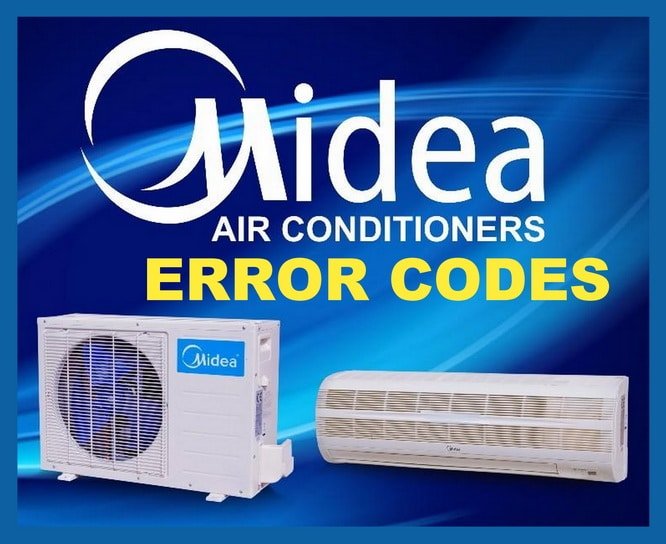
You might not be familiar with air conditioner error codes, so think of them as your appliance’s way of trying to communicate with you. Just like your car might flash a warning light if there’s an issue with the engine, your air conditioner is signaling that something needs attention. The “E2” code is one such message, and understanding it can help you troubleshoot the problem without breaking a sweat.
Understanding the E2 Error Code
The “E2” error code typically indicates an issue with the air conditioner’s temperature sensor. In simple terms, this sensor is like a thermometer inside your unit, constantly measuring the air temperature to ensure that your room stays at the desired level of comfort. When this sensor malfunctions, your air conditioner can’t properly regulate the air temperature, leading to performance issues.
When you see this code, your air conditioner is essentially waving a red flag. It’s alerting you that it’s having trouble reading the temperature correctly. This might result in your room being too hot or too cold, no matter how you adjust the thermostat. And let’s face it, that’s not the kind of surprise you want on a sweltering summer day.
So, what commonly causes this error? Several factors could interfere with the temperature sensor’s function. These could range from a simple wiring issue, where connections might be loose or corroded, to a more serious internal fault within the sensor itself. Understanding these potential causes is the first step toward resolving the problem and restoring your air conditioner’s functionality.
Loose or Corroded Wiring Connections
One common cause of the E2 error is loose or corroded wiring connections. Think of these wires as the veins of your air conditioner, carrying important signals and electricity to all parts of the unit. If there’s a disruption in this flow, it can affect how your air conditioner operates.
Over time, wires can become loose due to vibrations during operation. When this happens, the electrical signals might not reach the temperature sensor consistently. Similarly, corrosion can occur if your air conditioner is exposed to moisture. This corrosion acts like rust on a nail, preventing a clean connection and interfering with the sensor’s operation.
To address this, you might need to open up your air conditioner and check the wiring. Looking for loose connections or any signs of corrosion is a good starting point. If you’re not comfortable doing this yourself, it might be best to call a professional technician to give you a hand. They can ensure all connections are secure and free from corrosion.
Faulty Temperature Sensor
Another potential culprit behind the E2 error is a faulty temperature sensor itself. Imagine if your home thermometer suddenly decided it was measuring in Fahrenheit instead of Celsius – your readings would be all over the place! Similarly, if the sensor is damaged or defective, it won’t provide accurate temperature readings.
A sensor might fail due to wear and tear over time or an unexpected power surge. It’s a small component, but it plays a crucial role in keeping your room comfortable. If it’s not functioning correctly, your air conditioner won’t know when to cool or stop, leading to inefficiency and persistent discomfort.
If you suspect the sensor is faulty, replacing it might be necessary. This isn’t a particularly difficult task for a seasoned technician, but if you’re feeling adventurous and have a bit of DIY spirit, you could attempt it on your own. Just ensure you follow the manufacturer’s instructions carefully to avoid causing additional issues.
Interference from External Factors
Interestingly, sometimes the problem isn’t within your air conditioner at all but rather due to external factors affecting the sensor’s readings. For example, if your air conditioner is in direct sunlight or near other heat-generating appliances, it might be getting inaccurate temperature readings.
Think of it this way: if you placed your home thermometer next to a window where the sun shines all day, the readings would probably be off. Similarly, your air conditioner’s sensor needs a stable environment to provide accurate readings. If the room’s setup is causing interference, it might lead to the erroneous E2 code.
To mitigate this, try relocating heat-generating appliances away from the air conditioner or use curtains to block direct sunlight. This could help stabilize the temperature readings and prevent false alarms.
What to Do Next?
If you’re faced with the E2 error, don’t panic. Start by checking the obvious: examine the wiring and ensure all connections are snug. If that doesn’t resolve the issue, consider the potential need for a replacement sensor, or evaluate external factors that might be affecting the temperature readings.
In any case, maintaining your air conditioner with regular checkups and cleaning can help prevent these errors in the first place. By taking good care of your unit, you can ensure it remains a reliable companion during those hot days and beyond. And remember, if in doubt, professional help is just a call away to get your air conditioner back into perfect working order.